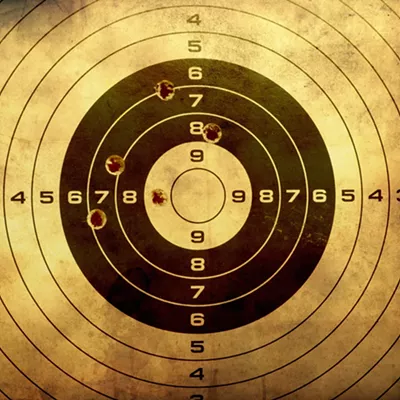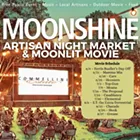The Davenport, Expo '74, Gonzaga basketball and the University District are among Spokane's successful transformations and examples often used to illustrate the region's passion and tenacity. Terrain, the local arts organization now in its 11th year, should also be included on this distinguished list.
With more than 250 artists, poets, filmmakers and musicians exhibiting and performing more than 500 works, Terrain 2018 will be the biggest ever. Held on Oct. 4-5 in the Jensen-Byrd Building, organizers expect more than 10,000 visitors.
"It's the biggest art event in the Inland Northwest, and maybe even the entire Northwest," claims Luke Baumgarten, co-founder.
Baumgarten and his wife Ginger Ewing co-founded Terrain in 2008 along with three other friends. "We started Terrain as a community-building exercise we believed would be a one-time-only event," Ewing recalls. "The idea was in response to a belief held by young people that if you want to be successful and have fun, get out of Spokane."
The founders were 20-somethings at the time, living in Spokane and surrounded by incredible talent. They watched, however, as great artists or bands would outgrow Spokane and leave.
"There wasn't enough venue infrastructure," says Ewing. "Spokane was siloed in terms of genre, emerging vs. established artists, and in terms of the definition of art."
The idea behind Terrain was "simply to get all these silos together in one place for one evening as a first step to keeping artists and creatives in Spokane," she continues.
The first Terrain was held in the Vault, featuring 30 artists and attracting about 1,500 attendees. "Within a few hours into the first event, we knew we had tapped into something special," says Baumgarten. "Spokane was hungry for this kind of thing."
What Luke and Ginger, as they're known around town, thought they were doing for their generation, and for the arts establishment, was appealing to all ages and demographics.
"By years three and four, grandparents were showing up and bringing toddlers," Ewing adds. Terrain moved to First Avenue for years two through six, then to the Washington Cracker Building for years seven through nine and to the Jensen-Byrd Building last year.
"The Jensen-Byrd Building is night and day from inside to outside," says Baumgarten. "You walk into a boarded up building. Inside there's 30,000 square feet of art on every wall stacked on top of each other. It's an incredibly dense menagerie with immersive art projects and entire rooms dedicated to site-specific installations."
Terrain embraces a broad definition of art including music, performance, dance, theater and literature, and it represents a mix of emerging and established talent. This year, 457 artists submitted 2,038 pieces for consideration.
Up until last year, Terrain was a Friday-night-only event. Thursday night was added to offer a sneak peak and to shorten lines on Friday. From inception, Terrain did not want an entry fee to deter visitors — so Friday night remains free, while Thursday night is $25. About 75 percent of the exhibited art will be offered for sale.
In addition to its flagship event, Terrain is also the organizer of Bazaar — a market of sorts for emerging artists. It's held the Saturday before Hoopfest.
Other progressive, local organizations are increasingly coordinating their events with Terrain, and this year the Mayor's Office asked Terrain to be a founding partner in a project called "Foreground" — a weeklong ideas festival designed to connect art and culture with tech and innovation.
The Triangle Venture Expo, showcasing many of Spokane's most compelling emerging companies and startups, will be holding its third annual event on Thursday, concluding with a reception at Terrain. Code in the Dark, a competition and massive party, at which top programmers compete to build a website under pressure, occurs Friday evening at the Fox. TEDxSpokane, bringing people together from the Inland Northwest to share ideas and generate new meaning and actions, takes place at the Bing on Saturday.
The audacious vision is to leverage Terrain and these sister events into Spokane's version of Austin's South by Southwest Conference and Festival. This is just the kind of pivot Spokane needs to secure its entrepreneurial future.
Although it may not be intuitive, Terrain's work nurtures and attracts other entrepreneurs, startups and emerging businesses. "Studies prove [that] art and cultural hubs spawn innovation communities," says Ewing.
Baumgarten adds: "Places like Austin, the Bay Area and Seattle were art centers first. Then tech followed. Grunge happened, and Seattle suddenly became the place where young people went. A strong and vibrant art culture is a major criteria for where people choose to live."
While Terrain's initial objective was to keep emerging artists and other creatives in Spokane, the unintended consequence is that Terrain has also contributed to a culture and economy that is attractive to emerging entrepreneurs. They no longer have to look to Seattle or elsewhere. ♦




















